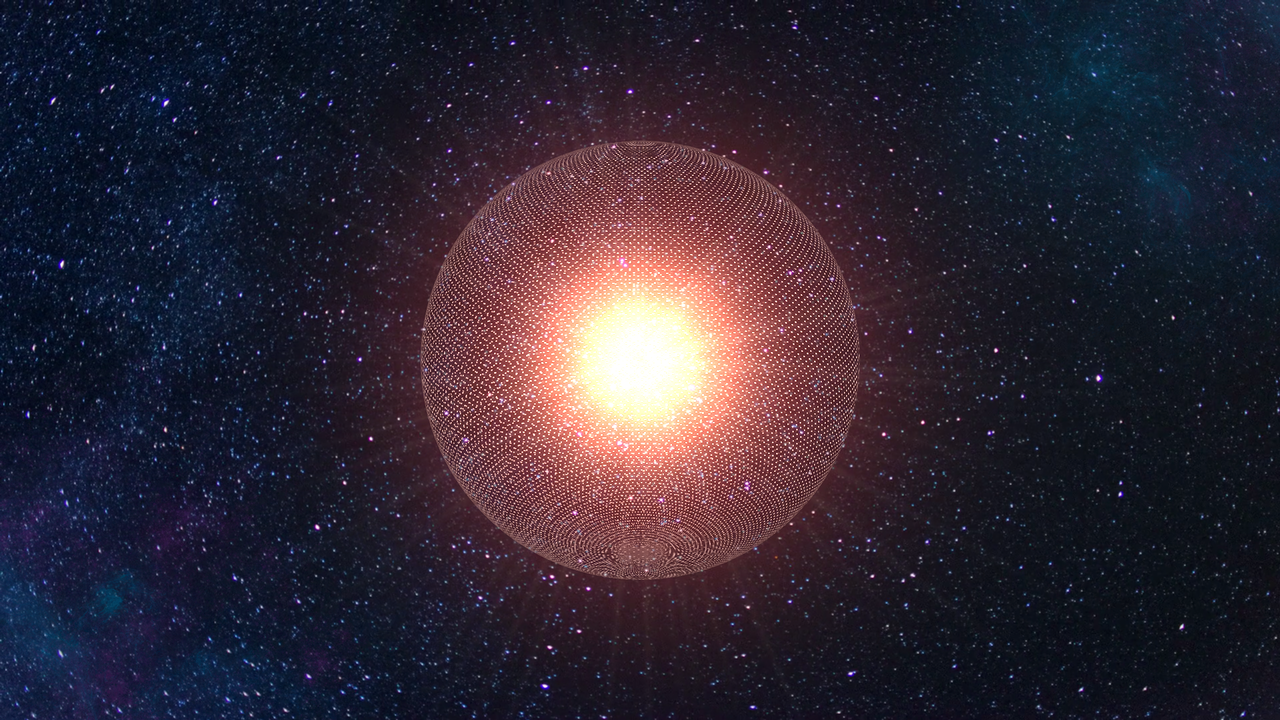Could a Dyson Sphere Harness the Full Power of the Sun?
by Seeker February 24, 2019 (seeker.com)
• Physicist Freeman Dyson popularized the concept of a structure soaking up 100 % of a star’s (like our Sun) and converting it into useful energy, known as a Dyson Sphere. Dyson claimed that looking for signs of massive structures capturing the power of a host star in distant solar systems could lead us to advanced extraterrestrial civilizations.
• Some believe that aliens might already be using a Dyson Sphere on a mysterious dimming star known as Tabby’s star, theorizing that the dimming is a sign of a structure surrounding the star. Other astronomers say that the dimming is likely just caused by dust.
• But astro-engineers say that a Sun-encircling sphere would be impractical, as the environmental and gravitational stresses of a solid structure around the Sun would certainly destroy the shell, even if we had the materials needed to do it. They suggest that the answer may be a ‘Dyson Swarm’ – a large number of advanced solar panels orbiting the Sun, capturing its light from all directions, and continuously transmitting the energy back to Earth.
• Futurists say building a Dyson Swarm would require extreme measures like mining Mercury for materials – eventually destroying that planet. But a successfully implemented Dyson Swarm could extend humanity’s survival in the solar system and provide the power needed to colonize other planets.
In a thought experiment, Physicist Freeman Dyson popularized the concept of a structure that could trap 100 percent of a star’s energy. Dyson claimed that advanced civilizations or extraterrestrials might use massive structures to capture the power of their host star. He said that looking for signs of these structures would lead us to other lifeforms. This concept inspired what later became known as a Dyson Sphere – a hypothetical megastructure that would surround the Sun, soaking up its light and converting it into useful energy.
Today, there are a few different Dyson inspired designs. The classic Dyson Shell, for instance, is often portrayed in sci-fi works. The solid structure, the size of a planetary orbit, contains solar habitats, each powered by their host star’s light. But this megastructure would be impossible for humanity to pull off due to the fact that the materials needed to build it don’t exist. On top of that, environmental and gravitational stresses of the Sun would destroy the shell.
Instead, some astro engineers believe a Dyson Swarm is the most practical design for our solar system. This concept would require the construction of an army of advanced solar panels which would orbit the Sun, capturing its light from all directions. The solar panels would collect the Sun’s radiation and continuously transmit the energy wirelessly back to Earth. Still, futurists say building a Dyson Swarm would require extreme measures like mining Mercury for materials – eventually destroying the planet. But if we manage to successfully create a sun sucking megastructure, it will extend humanity’s survival in the solar system and provide the power needed to colonize other planets. Considering all the advanced technology needed to make this happen though, it will be a very long time until any sort of Dyson Sphere takes the leap from science fiction to reality.
But, like Freeman Dyson, some people believe that aliens might already be using Dyson Sphere-like structures. And they point to a mysterious dimming star – known as Tabby’s Star – as potential evidence. Believers say that the dimming is a sign of a structure surrounding the star. While many astronomers say that the dimming is likely just caused by dust. But in the far-fetched chance that there is an advanced civilization out there soaking up all the energy in the universe, let’s just hope that they’ll use their power for good, not evil.
FAIR USE NOTICE: This page contains copyrighted material the use of which has not been specifically authorized by the copyright owner. ExoNews.org distributes this material for the purpose of news reporting, educational research, comment and criticism, constituting Fair Use under 17 U.S.C § 107. Please contact the Editor at ExoNews with any copyright issue.
